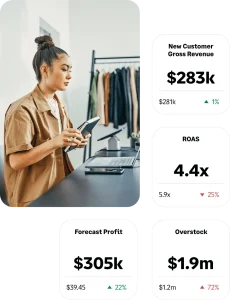By Aaron Franko, VP of Immersive Technology, Saritasa
Since the first generation of Virtual Reality, or VR technology was released, a number of advancements and ever-increasing use cases have emerged. No longer are headsets required to be attached to expensive computers, with wireless units able to provide an immersive, limitlessly customizable experience at an affordable price point. Realizing this affordability and potential for use as a business resource, businesses of all sizes are now beginning to adopt the technology for use as a training tool. The effectiveness of which is evidenced in a recent PwC study that found individuals who underwent VR training felt 40 percent more confident to act in real-life business situations than classroom learners and 35 percent more confident than e-learners.
With these statistics in mind, it’s important to consider the impact VR might have on the future of management training and business as a whole. Aside from the implementation of new training procedures that develop effective and well-rounded business leaders, VR also has the potential to up-skill business professionals in essential public speaking and presentation skills, which usually require many years of experience and multiple exposures to develop to a high level.
Management Training
VR’s effectiveness as an educational tool is largely due to its immersive nature in which trainees find themselves inside real-world scenarios. In these immersive environments, they’re able to gain first-hand exposure to a wide range of events commonly encountered within different roles where they’re required to think on their feet and identify paths to ideal outcomes. During a performance review management training scenario, for example, trainees might encounter a situation where they’re sitting across a desk from an employee at the beginning of a challenging conversation. From there, trainees are required to choose appropriate responses from a multiple choice panel or use voice response to advance the conversation. At the end of their session, they receive a score based on their responses, as well as any data collected by sensors – like body language or eye movement – to identify areas of improvement. If the trainee isn’t successful the first time, they can then repeat the scenario until they’re able to pass with flying colors.
In addition to training management staff in real-world scenarios, the technology also acts as a risk mitigation tool. This is because it provides a safe space where management personnel can encounter and navigate difficult situations, removing the need for staff to ‘learn as they go’. Because of this, the use of VR in training reduces the chance of real-world HR violations and even potential lawsuits if, for example, a termination or salary review meeting is not conducted appropriately.
Public Speaking and Presentation Skills
Every business leader understands how vital effective public speaking and presentation skills are for success. While these skills aren’t innate in everyone from the start, with the appropriate training and exposure, they can be developed. In general, public speaking and presentation classes focus more on applying theory in a controlled environment, which, while not ideal for skill development, makes sense – after all, it’s hard to get the same exposure as speaking in front of hundreds of people from a classroom.
VR has the potential to train effective public speakers because it enables a multi-tiered approach. While it will never be a total alternative or substitute for practicing in front of a live audience, it can help those that struggle with public speaking or social anxiety with the tools they need to practice independently. Participants can not only receive theory coursework via their VR headset, but also receive exposure in front of a virtual crowd, who can be designed to represent anything the business requires, including: distracted, unruly, barely responsive, wholly supportive, or even outright negative. Formats can be similar to management training VR simulations, with multiple-choice questions throughout on how best to engage an audience, eye tracking capabilities and other sensors can provide feedback on eye contact and positioning, as well as general body language to provide a holistic overview of where participants are at, as well as areas for improvement.
Untapped Possibilities and Sustained ROI
Depending on business structure, internal process, and policies, the VR experience for management training is essentially limitless and can be custom-developed to reflect any situation, whether it’s the interview process for new hires, the termination of an employee, or a hard discussion around salary. In the context of public speaking and presentations, a wide range of scenarios can be implemented, including board meetings, pitch presentations, and of course, public speaking to audiences of any size.
Typically, the cost for in-person management training runs upwards of more than $1000 per participant for standard group courses, and much higher than that for one-on-one professional development coaches. On the other hand, public speaking and presentation group workshops cost an average of $590, with workshops on the more expensive end running up to $2700 for the same offering. In addition to these course expenses, travel, productivity downtime and accommodation also need to be taken into account. While the development and implementation cost for a customized training VR platform is more expensive than sending an employee to a workshop, the technology can be used over and over again to train new hires or refresh existing employee knowledge without incurring the same expense. Additionally, the VR can be updated with new scenarios, capabilities, policies, and procedures as business circumstances change and technological advances emerge, which means the technology will grow with the business rather than becoming outdated. As such, the potential ROI for this technology is both significant and sustained.
Depending on business requirements, outcome measurements can be automated to provide the trainee with a score at the end of their session with no input from a supervisor, or designed to include a human supervisor for detailed feedback at the end. There’s also the option to build a hybrid of both. This versatility means that businesses can have the choice between creating a fully-automated training system that employees can use to upskill as necessary, or a more involved, hands-on training schedule that can be supervised and tracked by the businesses’ HR department.
While stepping into a virtual world to receive management training or practice public speaking and presentation skills may seem like something out of a sci-fi novel, it’s now the reality. With studies already attesting to its effectiveness as an educational tool, as well as the possibility for sustained ROI, it’s only a matter of time until the technology becomes a vital aspect of staff development in any professional setting.
About the author

VP of Immersive Technology at Saritasa, Aaron Franko, has spent over 20 years working in several different areas of technology and has achieved many technical certifications as well as an MBA from the New York Institute of Technology. He currently leads Saritasa’s Immersive Technology Business Unit focusing on Virtual, Augmented and Mixed Reality for business.
Related Articles

LegitScript’s Data Reveals 1200% Increase in Violative and Problematic Advertisements for GLP-1 Medications
LegitScript Has Seen Nearly a 100% increase in New Applications for its Healthcare Merchant Certification Program Year Over Year

Merchants Are Spending 332 Hours Each Year On ‘Overwhelming” Admin
Polling over 1,000 businesses, the study found that US merchants dedicate 6 hours and 24 minutes weekly on manual admin tasks, 27 hours and 44 minutes per month, and 332 hours per year.

Live Shopping: The Silver Bullet to Product Returns?
“Direct interaction leads to more informed purchases, as customers feel more confident asking questions and seeking clarification on products before buying, ultimately reducing the likelihood of returns,” writes Kenneth Tan, Co-Founder and CEO of BeLive Technology

A New Era of Retail Customer Obsession
Brands like Polestar, Vinted and Home Depot are changing how they manage their customer journey. What can leaders learn from this?



 for the latest news and job opportunities in retail tech
for the latest news and job opportunities in retail tech 